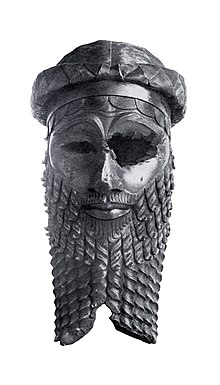Reginald Campbell Thompson

Reginald Campbell Thompson (21 August 1876 – 23 May 1941) was a British archaeologist, assyriologist, and cuneiformist. He excavated at Nineveh, Ur, Nebo and Carchemish among many other sites.
He was born in Kensington, and educated at Colet Court, St. Paul's School and Caius College, Cambridge, where he read Oriental (Hebrew and Aramaic) Languages.
In 1918 Mesopotamia fell into British hands and the Trustees of the British Museum applied to have an archaeologist attached to the Army in the field to protect antiquities from injury. As a Captain in the Intelligence Service serving in the region and a former assistant in the British Museum, Campbell Thompson was commissioned to start the work. After a short investigation of Ur, he dug at Shahrain and the mounds at Tell al-Lahm.
After the war he held a fellowship at Merton College, Oxford.
The writer Agatha Christie was invited by Campbell Thompson, along with her husband the archaeologist Max Mallowan, to the excavation site at Nineveh in 1931[1] .
He died in 1941 aged 64 while serving in the Home Guard River Patrol on the River Thames.
- R. Campbell Thompson The Devils and Evil Spirits of Babylonia 2 vols. London, 1903-1904.
- Semitic Magic: its Origins and Development. London, 1908
- Archaeologia, Vol LXX (1921)
- Late Babylonian letters: transliterations and translations of a series of letters written in Babylonian cuneiform, chiefly during the reigns of Nabonidus, Cyrus, Cambyses, and Darius
- A century of exploration at Nineveh, with Richard Wyatt Hutchinson
- The epic of Gilgamish, text, transliteration and notes 1930
Sources
- The British Museum
- A season's work at Ur, Al-'Ubaid, Abu Shahrain (Eridu) and elsewhere being an unofficial account of the British Museum archaeological mission to Babylonia 1919, Harry Reginald Holland Hall, Methuen, 1930
External links
- ^ McCall, Henrietta. "Agatha Christie and Archaeology". Retrieved 15 December 2011.
